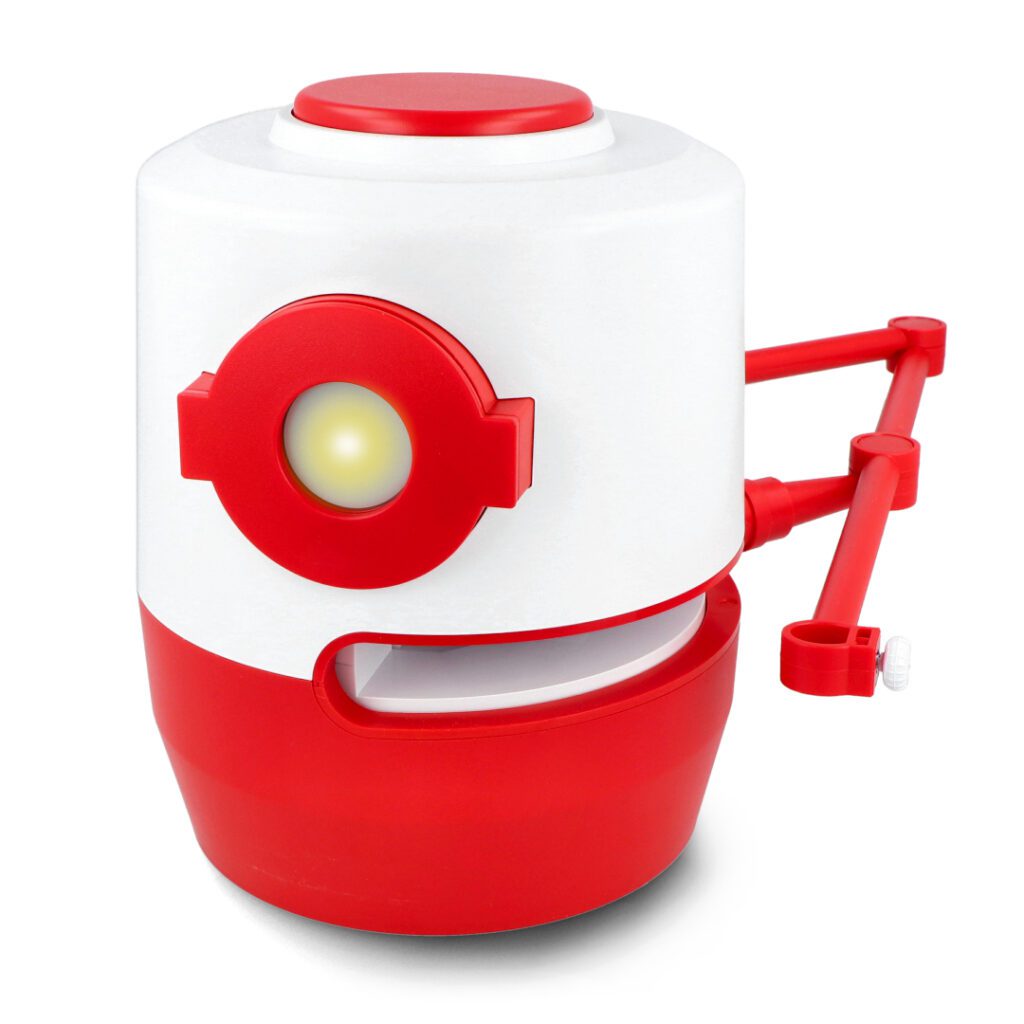Table of Contents:
Interactive educational robots are one of the most desirable categories of toys for children today.
What sets them apart is their unique ability to respond to the user’s actions.
This not only enriches play, but also facilitates communication between the child and the device.
The ability to interact, in turn, makes the toddler more willing to reach for educational tools.
Robots are able to turn the learning process into a real adventure.
Robots for learning programming - what benefits do they provide?
The intelligent robots are designed to be able to respond to children’s commands and actions.
This gives little users a sense of direct contact with the device.
This interactivity is a way to make play more interesting.
As a result, it becomes more attractive and engaging, which also encourages children to reach for the robot more often.
This translates into the possibility of realizing an educational function.
Programming learning robots are designed to convey knowledge in various fields such as electronics, programming, mechanics, robotics, as well as mathematics, physics and biology in an accessible way.
During interactive play, children learn new concepts and develop practical skills in these fields.
Such devices are also able to spark the curiosity of toddlers, while encouraging them to experiment and explore new possibilities.
The robots are tailored to different age groups, allowing the gradual introduction of more complex activities.
Such a device was created to develop key skills.
Knowledge of the basics of electronics, programming and robotics is increasingly in demand, and robots are able to develop important competencies in children from an early age.
It is also one of the best ways to get a child interested in the future fields of science.
Besides, the fun itself stimulates creativity and logical thinking and problem-solving skills.
Educational robot vs. age of child
Matching the robot to the child’s age is very important, as it directly affects whether the toddler will be interested in playing.
In addition, the device should be matched to the child’s interests and the goals to be achieved through learning with the robot.
In addition, you should take into account whether the child already has some experience with robotics and programming.
For beginners, it is advisable to choose intuitive devices distinguished by simple operation, while for advanced robots that offer many different functions.
For younger children and preschoolers, the best choice will be interactive programming robots or toy robots.
They are easy to use, and at the same time do a very good job of capturing the child’s attention.
Robots imitating animals, such as dogs, are also interesting, as they combine learning with elements of caring for the “pet.”
School-age children may be particularly interested in educational wheeled robots or Lego sets.
They allow creative building and programming, while developing logical thinking and problem-solving skills.
For teens, the best choice would be advanced versions such as Ozobot, Photon or Robobloq sets.
These robots offer more opportunities for programming and experimentation, which is sure to interest young technology enthusiasts more.
Interactive programming robots - what can you go for?
Interactive robots are designed to capture the attention and engage users as much as possible.
This is possible through direct interaction.
The devices can also respond to voice, touch or gestures.
Among interactive robots, Cozmo is very popular.
Despite its small size, it offers quite a few interesting functions.
It is capable of, among other things.
to recognize faces and express emotions.
Miko 2 is also an interesting option.
It is a very sociable and intelligent robot that enables learning through play and conversation.
Parents can also consider buying Robo Wunderkind.
It’s an educational kit that allows you to build and program your own robots, thus supporting the development of creativity.
Wheeled educational robots
This group includes devices that move on wheels, ideal for slightly older children.
They will work well both as robots for programming and learning mechanics.
One of the more popular models is LEGO Mindstorms EV3.
This is an advanced set designed for building robots.
It allows you to create many interesting models and program them.
The whole process is intuitive, so children should have no difficulty mastering the functions.
Another suggestion is the mBot from Makeblock, which is very easy to assemble and teaches programming in Scratch, Python and Arduino.
You can also consider buying a mobile Dash robot.
It can be programmed using a tablet or smartphone.
Toy robots, robot dogs and Lego
This is one of the best-loved categories, which combines fun with learning through programming and interaction.
An example of an interesting device is the Sphero SPRK+, which is a robotic ball that can be programmed in different languages.
The device supports learning coding in a practical way.
You can also consider buying Anki Vector, which is a home robot with advanced artificial intelligence.
It is capable of responding to both voice and the environment.
Another way to introduce children to the world of robotics is to purchase a robotic dog.
Zoomer, which responds to voice commands, can learn new tricks and is able to interact emotionally with the user, is very popular.
Another option is Aibo from Sony.
It’s an advanced robot dog with deep learning and personality development capabilities.
As for Lego Robotics sets, for younger children, LEGO Boost, which introduces the basics of coding and robotics through interactive models, will work well.
A more advanced option is LEGO Technic, which offers complex buildings and mechanisms, ideal for older children and teens.
How useful was this post?
Click on a star to rate it!
Average rating 0 / 5. Vote count: 0
No votes so far! Be the first to rate this post.





















